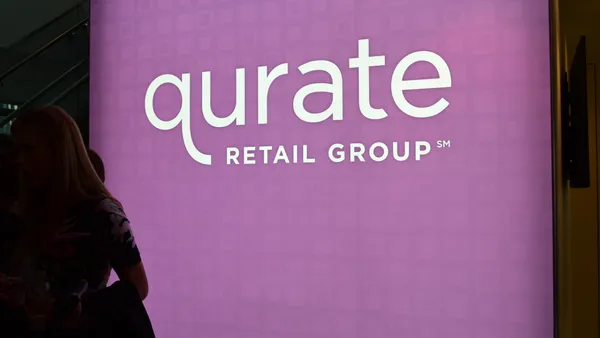Dive Brief:
- Online grocery sales in the U.S. are forecast to grow an average of 18.1% annually during the next five years, according to IGD. This will take online’s share of the total grocery market from an estimated 1% today to 2% by 2022, representing a $20 billion growth opportunity.
- IGD projects the U.S. grocery market overall to grow at a 3.6% compound annual growth rate (CAGR) in the next five years, reaching $1,722 billion by 2022. In addition to e-commerce, discount grocers, including dollar stores and hard discounters such as Aldi and Lidl, are expected to grow at a faster pace (7.6% CAGR) than the overall market.
- "We expect hypermarkets and supermarkets to face a more challenging time … However, as sales shift online, both types of stores are innovating with new ways to entice shoppers in-store and merge the digital and physical worlds — for example, by developing healthcare hubs, investing in their prepared foods and food-to-go ranges and using digital tools to inform, engage and reward shoppers,” Stewart Samuel, IGD North America program director, said in a statement.
Dive Insight:
Online grocery attaining a 2% market share by 2022, as forecast by IGD, seems rather conservative compared with other analyst projections. Based on IGD’s total grocery market forecast, this means online grocery sales could reach just over $34 billion in 2022 — a rather low number given phenomenal growth and advancements in recent years.
Other figures and forecasts indicate a far more optimistic view.
In its latest "Ecommerce Supermarket Scorecard Report," consulting firm Brick Meets Click found online grocery sales are growing at 25% per year. Unata’s 2017 Grocery e-commerce Forecast expects 31% of U.S. consumers will order groceries online this year, a 19% increase from last year.
In what could be one of the most widely circulated forecasts on U.S. online grocery, a joint study from the Food Marketing Institute and Nielsen projects that 20% of all grocery sales, representing around $100 billion, will come from online shoppers by 2025. Furthermore, in the next 10 years, the percentage of people doing their grocery shopping online is expected to more than double: 72% of shoppers are projected to conduct 25% of their grocery shopping online by 2025.
And there is some even more eye-popping information from Packaged Facts, which projects Amazon’s food and beverage sales could top $30 billion by 2025. Granted that includes Whole Foods’ brick-and-mortar stores, but still it implies a huge chunk of growth coming from online. Amazon has big plans to disrupt retail grocery and will be a key force driving more grocery sales online.
Conservative versus aggressive forecasts aside, the point is that online grocery will grow at a rapid clip in the coming years and take share away from conventional grocery formats, including supermarkets, supercenters and other traditional grocers. IGD projects supermarket share of the U.S. grocery market will drop from 38% today to 36.9% in 2022. Hypermarket, or supercenter, share will go from 24.2% to 22.9% during the same period.
A recent report from Inmar Willard Bishop Analytics projects the number of traditional supermarkets in the U.S. will decrease 24.6% by 2021, as online grocery shopping continues to grow at a rapid pace, driven by millennials and consumers looking for convenient solutions.
One thing analysts generally agree on is that click-and-collect (vs. home delivery) will emerge as the dominant and more economically sound online grocery format across America. The number of grocery stores offering click-and-collect grew from 15% in 2015 to 23% in 2016. The good news is this means most shoppers will still be visiting stores to collect their goods. IRI research has found that 69% of shoppers who go in-store to pick up their orders end up buying additional items.
The expansion of click-and-collect programs by market leaders Walmart and Kroger have been well documented. Regional powerhouses — like H-E-B and ShopRite, among others — are ramping up their services, too. Several others are now scrambling to stake a claim in the online space. SpartanNash, for example, has partnered with technology solutions provider Unata to expand click-and-collect. A growing roster of retailers — Bashas, BJ’s Wholesale, Costco, Meijer and Wegmans among them — are inking deals with online delivery services Instacart and Shipt.
Brick-and mortar grocery shopping isn’t dead by any means — it’s just changing.














